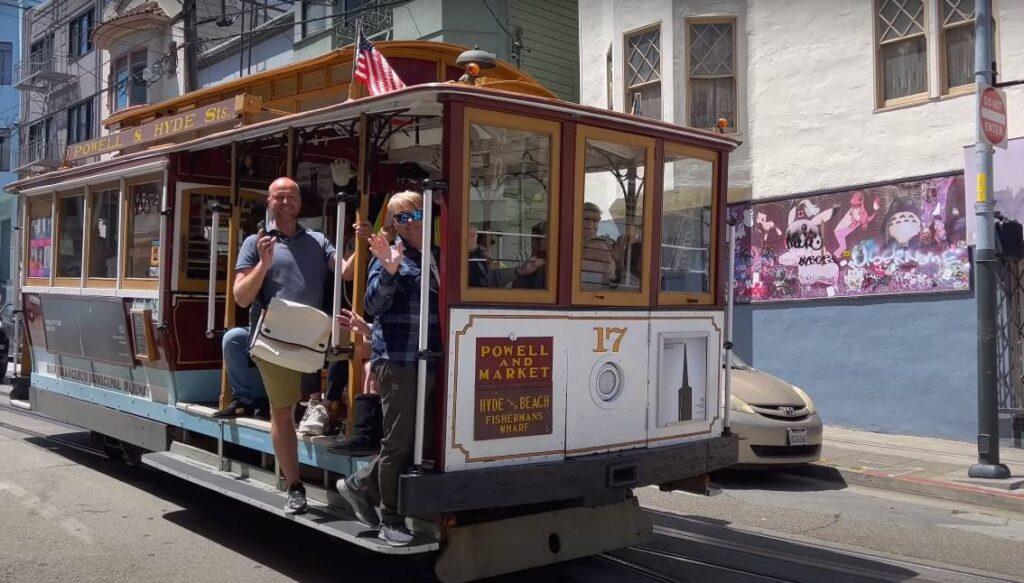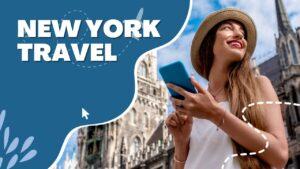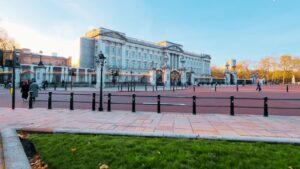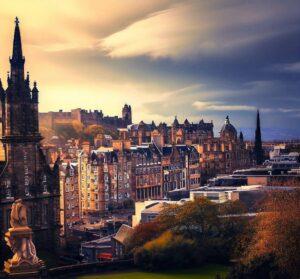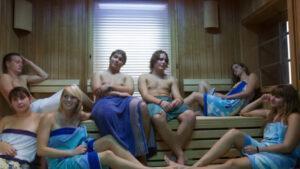Have you ever dreamed of Riding Cable Cars in San Francisco? If so, you are not alone. The cable cars are one of the most iconic and beloved attractions of the city, attracting millions of visitors every year. They are not only a fun and convenient way to get around, but also a living piece of history and culture. This article will teach you everything you need to know about riding cable cars in San Francisco, from tips and tricks to routes and landmarks to fun facts.
What are cable cars and how do they work?
Cable cars are a special way to travel on San Francisco’s hills. They use a cable and a grip to move and stop. They were invented in 1873 by Andrew Hallidie, who wanted a safer and better way to transport people and goods on the steep slopes. He made the first cable car line on Clay Street, which is still running today. The cable cars became popular and expanded to other areas of the city.
Cable cars faced many problems and dangers over the years, such as fires, earthquakes, accidents, and competition. In 1947, Mayor Roger Lapham wanted to get rid of all the cable cars, saying they were old and costly. This caused a public protest and a campaign to save the cable cars, led by Friedel Klussmann, who fought to keep the cable cars as a historic and cultural treasure. In 1954, she won a vote that protected the remaining three cable car lines.
Today, the cable cars are run by the SFMTA and are a National Historic Landmark and a California Historical Landmark. They are also one of only two moving National Historic Landmarks in the world and one of the few manual cable car systems in the world.
Tips for riding the cable cars
Riding the cable cars is an exciting and memorable experience that you should not miss when visiting San Francisco. However, it can also be challenging and confusing if you do not know what to do or expect. Here are some tips that will help you ride the cable cars like a pro:
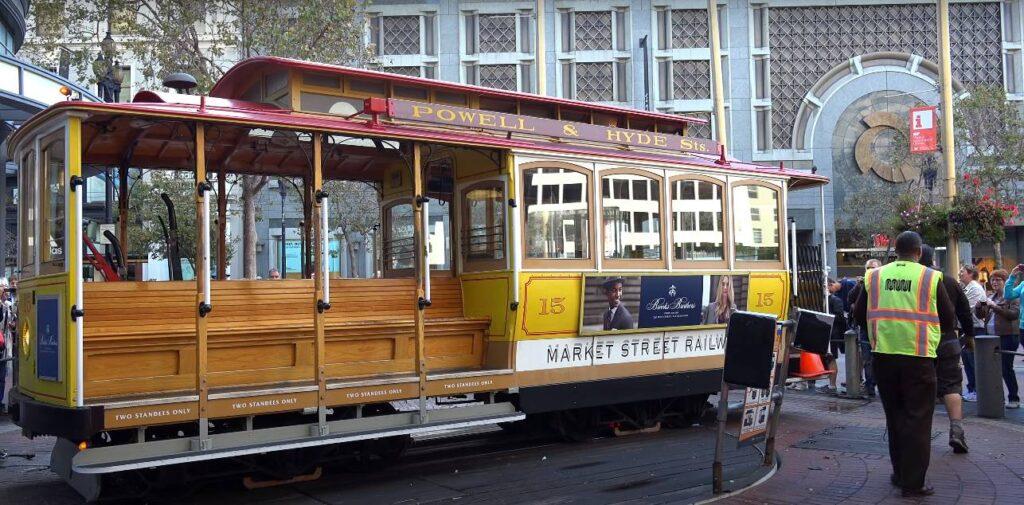
Where to find the cable car stops: The cable car stops are marked by brown signs with yellow letters that say “Cable Car Stop“. They are usually located at intersections or corners along each route. You can also use online maps or apps to locate them.
How to purchase tickets or passes: You can buy single-ride tickets ($8 for adults, $4 for seniors or disabled) from the conductor on board or at ticket booths at some terminals. You can also buy one-day ($24), three-day ($36), or seven-day ($48) passes from ticket booths or vending machines at some terminals or online. Use a Clipper card or MuniMobile app to pay for your fare.
How to board and exit safely and smoothly: One can board or exit from any door on either side of the car. However, you should always wait for the car to come to a complete stop before getting on or off. You should also hold on to a pole or strap while riding and avoid leaning out of the car. You should also follow the instructions of the conductor and gripman at all times.
How to choose the best seats and views: For the best seats and views, sit on the downhill side to see more landmarks, or on the uphill side to feel more thrill. Sit inside for more comfort, or outside for more fun. Switch seats or sides along the way for variety.
How to avoid long waits and busy times:
The cable cars are very popular and can get crowded, especially during peak hours (7-9 am and 4-6 pm), weekends, holidays, and special events. To avoid long waits and busy times, plan your trip and check the schedule and status of the cable cars online or by phone.
Avoid the popular terminals, such as Powell and Market or Hyde and Beach, and board at less crowded stops. Ride early or late, when there are fewer riders. Ride during the off-season (January-March or October-November), when there are fewer tourists and more discounts.
Routes of the Cable Cars in San Francisco
There are three main cable car routes in San Francisco: Powell-Hyde, Powell-Mason, and California Street. Each route has its characteristics, advantages, and disadvantages. Here is a brief overview of each route:
| Route | Length | Duration | Direction | Scenery |
|---|---|---|---|---|
| Powell-Hyde | 2.1 miles | 15 minutes | North-South | Hills, bay views |
| Powell-Mason | 1.6 miles | 10 minutes | North-South | Hills, city views |
| California Street | 1.4 miles | 10 minutes | East-West | Flat, financial district |
The Powell-Hyde line is considered the most scenic and exciting of the three routes. It starts at Powell and Market Streets in downtown San Francisco and ends at Hyde and Beach Streets near Fisherman’s Wharf. Along the way, it passes through some of the most famous landmarks and attractions of the city, such as Union Square, Chinatown, Nob Hill, Lombard Street, Russian Hill, Ghirardelli Square, and Fisherman’s Wharf.
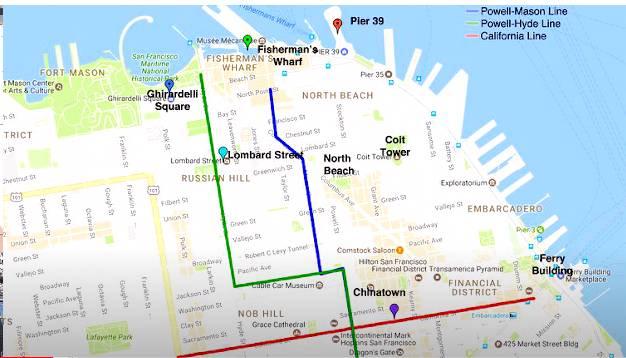
The Powell-Mason line is similar to the Powell-Hyde line, but it takes a slightly different route after crossing Nob Hill. It starts at Powell and Market Streets in downtown San Francisco and ends at Taylor and Bay Streets near Fisherman’s Wharf. Along the way, it passes through some of the most popular neighborhoods and sights of the city, such as Union Square, Chinatown, Nob Hill, North Beach, Telegraph Hill, and Fisherman’s Wharf.
The California Street line is the oldest and shortest of the three routes. It runs from Van Ness Avenue to Market Street along California Street. Along the way, it passes through some of the most affluent and historic areas of the city, such as Pacific Heights, Nob Hill, Chinatown, and the Financial District.
Fun Facts about the San Francisco Cable Cars
You have learned a lot about riding the cable cars in San Francisco, but there is still more to discover. The cable cars are full of surprises and secrets that will make you appreciate them even more. Here are some fun facts about the cable cars that will amaze and impress you:
- The cable cars are the only moving National Historic Landmark in the world. They were designated as such in 1964 by the U.S. Secretary of the Interior, who recognized their historical and cultural significance to the city and the nation.
- The cable cars can carry up to 60 passengers, but they do not have a fixed capacity or limit. The conductor decides how many people can board or exit at each stop, based on safety and comfort.
- The cable cars have no brakes or steering wheel. They rely on the grip and the brake to control their movement and direction. The grip attaches or detaches from the cable, while the brake presses against the rails. The gripman and the conductor work together to operate the cable car.
- The cable cars hold several Guinness World Records, such as the longest-running cable car system in the world (since 1873), the steepest gradient for a regularly operated railway (31% on Hyde Street), and the largest collection of historic cable cars (28 in total).
- The cable cars have appeared in many famous movies, songs, and books, such as Vertigo, Bullitt, The Maltese Falcon, Rice-A-Roni commercials, I Left My Heart in San Francisco, Tales of the City, and more.
The cable cars are more than just a mode of transportation; they are a symbol of San Francisco’s spirit and charm. They have survived many challenges and changes over the years, but they have never lost their appeal and popularity. The cable cars are a testament to the ingenuity and creativity of their inventors, operators, and supporters. They are a source of pride and joy for locals and visitors alike.
Also, Read: Travel to Florida
